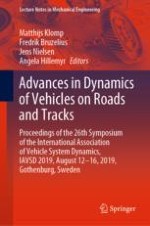2020 | OriginalPaper | Buchkapitel
Locomotive Adhesion Control + Rail Friction Field Measurements = ?
verfasst von : Maksym Spiryagin, Harold Harrison, Qing Wu, Dwayne Nielsen, Colin Cole, Peter Wolfs, Chris Bosomworth, Mark Hayman
Erschienen in: Advances in Dynamics of Vehicles on Roads and Tracks
Aktivieren Sie unsere intelligente Suche, um passende Fachinhalte oder Patente zu finden.
Wählen Sie Textabschnitte aus um mit Künstlicher Intelligenz passenden Patente zu finden. powered by
Markieren Sie Textabschnitte, um KI-gestützt weitere passende Inhalte zu finden. powered by
